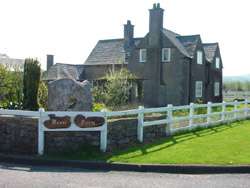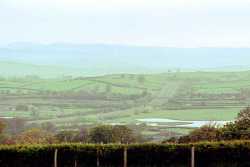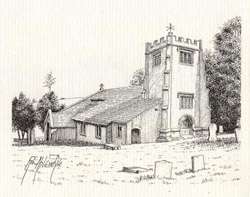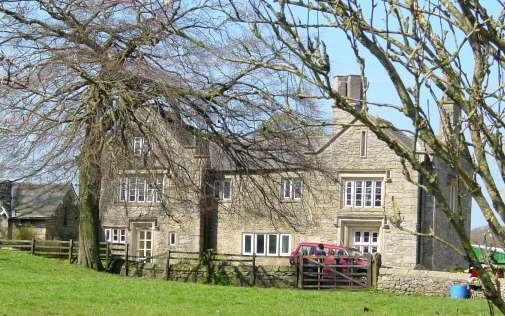OVER KELLET - A BRIEF HISTORY
 Instead of one family owning all the land in the village from time immemorial, there has been great diversity and change of ownership. This has it's own fascination. For a time Kellet was even a part of the Kingdom of Scotland. Briefly it was even administered from Yorkshire.
Instead of one family owning all the land in the village from time immemorial, there has been great diversity and change of ownership. This has it's own fascination. For a time Kellet was even a part of the Kingdom of Scotland. Briefly it was even administered from Yorkshire.
The excavation of the Bronze Age burial site near Manor Farm, Borwick in 1982 suggests there may have been settlements hereabouts then. With an ever present water supply from the several springs (hence the Norse name Keld or Kellid) in the village, a prime requirement was met.
 Of the Romans there is no trace within the Parish bounds. They stuck mostly to their camp at Lancaster and the route north through the Lune valley. The Parish would not have seemed an attractive site for a Roman conscript's retirement villa. They did, however, have an elaborate docking system nearby, at what is now called 'Dockacres'. This was uncovered when gravel was being extracted in 1967. Tidal waters then covered much of Carnforth Level and must have been navigable.
Of the Romans there is no trace within the Parish bounds. They stuck mostly to their camp at Lancaster and the route north through the Lune valley. The Parish would not have seemed an attractive site for a Roman conscript's retirement villa. They did, however, have an elaborate docking system nearby, at what is now called 'Dockacres'. This was uncovered when gravel was being extracted in 1967. Tidal waters then covered much of Carnforth Level and must have been navigable.
 The Vikings did come, probably peaceably, to settle and not to pillage. There may have been a Church here by the C 10th. The Saxon/Early Norman font retrieved from Hall Garth's garden in 1973, is of that period. The perambulations of St Cuthbert's bones, as set out in the account in Durham Cathedral, suggest a possible date of 960 AD when his coffin may have lain here and as, perhaps, the time when the first church was built.
The Vikings did come, probably peaceably, to settle and not to pillage. There may have been a Church here by the C 10th. The Saxon/Early Norman font retrieved from Hall Garth's garden in 1973, is of that period. The perambulations of St Cuthbert's bones, as set out in the account in Durham Cathedral, suggest a possible date of 960 AD when his coffin may have lain here and as, perhaps, the time when the first church was built.
 The present Church dates back to C 12th, but much of it is late Perpendicular. There were extensive alterations in 1817 and further alleged improvements in the 1860s. A Wesleyan Chapel was built in 1880 and enlarged in 1910. The building was on the site of a barn which belonged to Longton's Farm. There is a burial ground nearby of about one acre which was opened in 1911. Records show a total of 36 Baptisms between 1923 - 1992 and 5 marriages prior to it's closing in 1992.
The present Church dates back to C 12th, but much of it is late Perpendicular. There were extensive alterations in 1817 and further alleged improvements in the 1860s. A Wesleyan Chapel was built in 1880 and enlarged in 1910. The building was on the site of a barn which belonged to Longton's Farm. There is a burial ground nearby of about one acre which was opened in 1911. Records show a total of 36 Baptisms between 1923 - 1992 and 5 marriages prior to it's closing in 1992.
In the Parish the oldest dated building is Birklandbarrow. 1663 is the date of it's rebuilding, but it had been a working farm attached to Cockersands Abbey for centuries before. There is an early reference to Berchlundberg (Birchcopse Hill) circa 1250.

In Capernwray and Over Kellet there was considerable rebuilding in the late C17th and early C18th, as the wattle and daub buildings were replaced by stone. Houses probably continued to be thatched for a short time. Hall Garth, as we know it, is the site of an earlier manor house, possibly built of brick. One interesting farmhouse is Capernwray Old Hall. It was the seat of the Martons before the building of the 'new' Capernwray Hall. The frontage dates back to circa 1700, but some of the rear goes back much earlier to the C 13th and has very substantial walls.